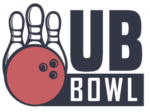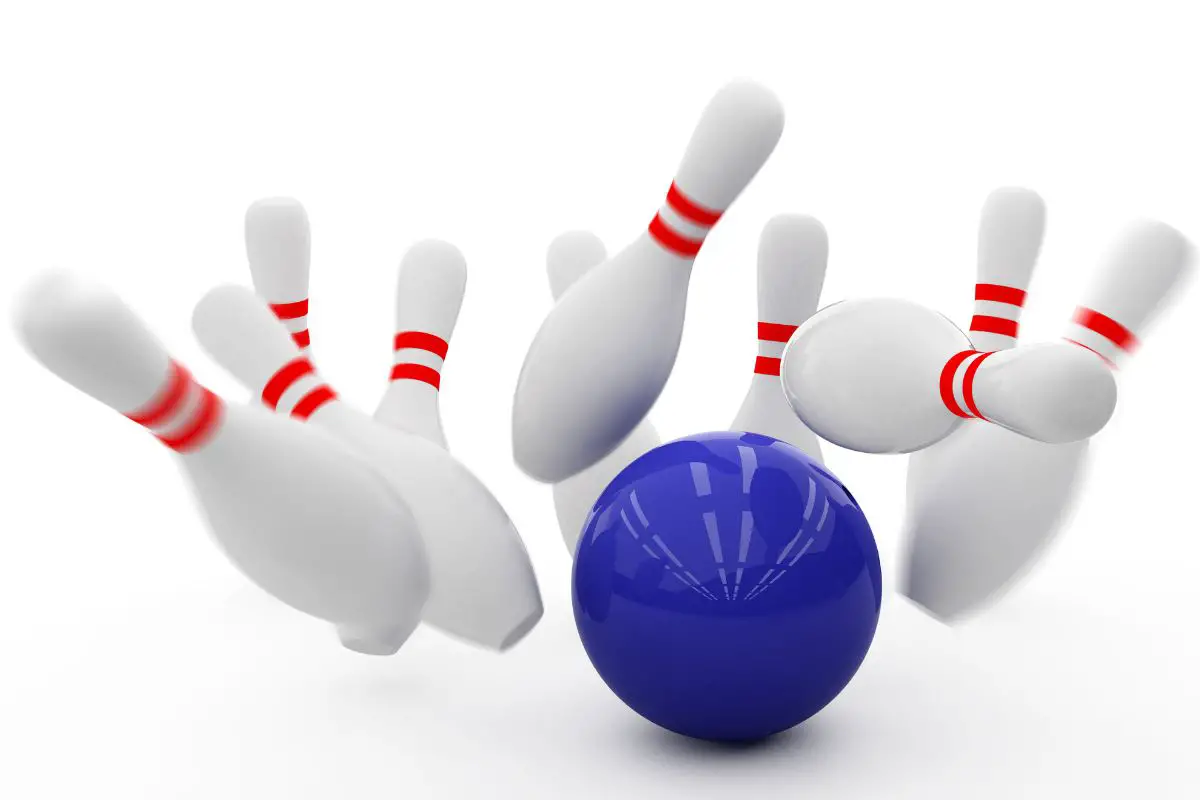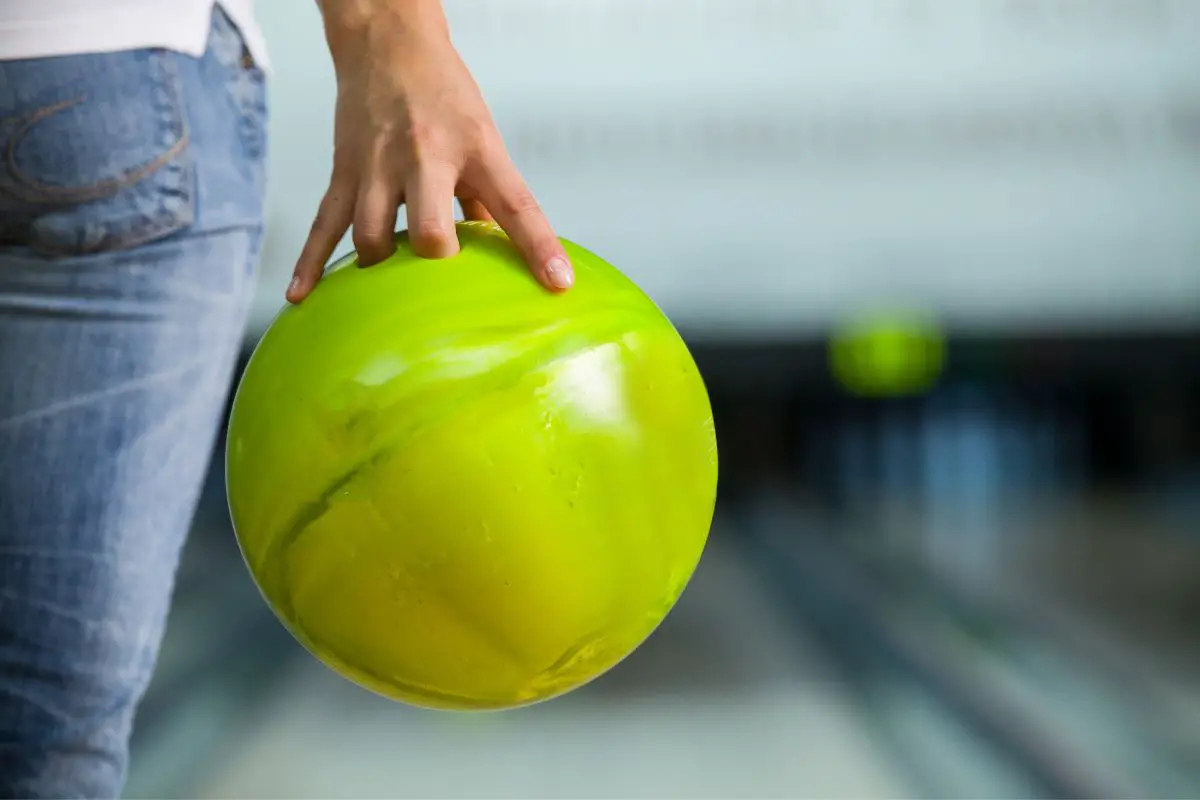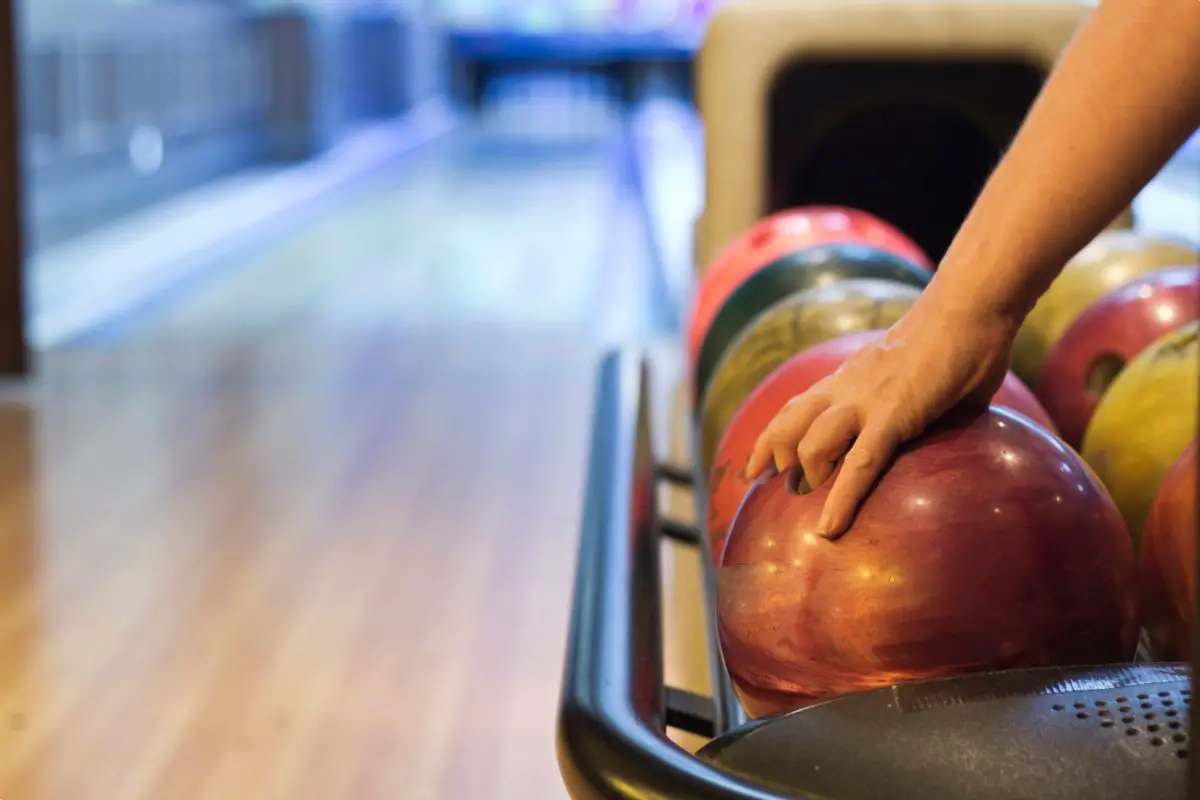Have you ever been at your local bowling alley and stopped to think, what are bowling balls made of?
If you’re relatively new to bowling or are hoping to learn more about the sport as you’re taking it more seriously, we’ve got all the information you need.
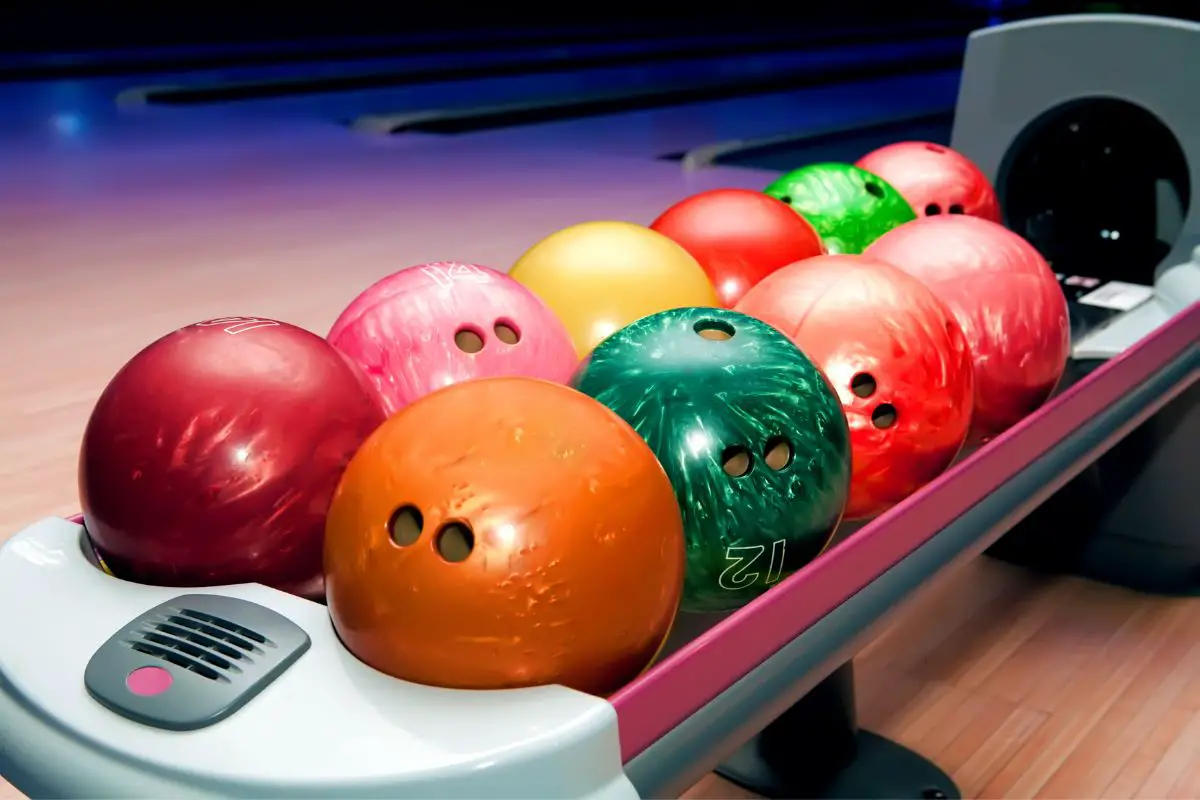
There are a number of different types of bowling balls, depending on the intended purpose, experience level, and the surface it’s being used upon.
As a lot of people only go bowling for fun and social purposes, you may not have imagined that there was much difference between one ball and another, yet this is a common misconception.
Here we shall cover what bowling balls are made of and which ones are suited for which purpose.
Anatomy Of A Bowling Ball
The standard bowling ball is mainly composed of two parts: the weight block and the coverstock.
We’ve covered the coverstock in previous articles; this is the outer shell or coating of the bowling ball and the part that you see and touch.
This outer shell can be made using a variety of materials depending on the intended outcome and surface material it will be used on.
The weight block is below this and can come in two forms: high mass and low mass. As described, this element allows the control of weight distribution in the ball.
Weight Blocks
A high-mass weight block is usually a pancake-shaped weight that sits close to the shell or coverstock of the ball.
This type of weight distribution is used to allow a lot of lengths down the lane and not as much heavy roll in the ball.
A low-mass weight block can come in a variety of shapes and densities. This tends to be placed at the middle or center of the ball which helps to create a heavier roll, increasing the hooking potential.
Types Of Coverstock Material
The coverstock material used in bowling balls has changed dramatically over the years as we have made huge leaps in technology.
In the last century or so, we’ve seen bowling balls be covered using rubber, then urethane, and finally more modern materials such as reactive resin. We will cover the materials that are being used on bowling balls today.

Plastic/Polyester
When we refer to the standard ‘house balls’ in bowling alleys, we are referring to the ones made out of plastic, or more properly, polyester. This is probably the first bowling ball you ever encountered.
These are the basic coverstocks that give a smooth finish. Due to this smooth finish, the ball doesn’t create much friction with the lane surface and is more likely to travel where it’s intended in a straight line.
As this material is hardwearing, cheap, and doesn’t impose a lot of friction, it’s the general coverstock used in bowling alleys.
If you’re a beginner wanting to purchase your very first bowling ball, this can be a great starting point before you decide if you want to invest in something a little more expensive.
Urethane
Urethane or polyurethane is a versatile coating known for its durability, hence it’s very popular in bowling.
These are great for intermediate bowlers and those who are wanting to learn to hook as they are designed specifically to make the ball hook more.
This occurs due to the increased friction provided by the material when in contact with the lane surface. It’s worth noting that they can also be used for splits.
Although you may have upgraded from a novice to an intermediate ball, you may still want to keep your plastic ball around. These can still be useful!
As plastic and polyester balls are made for straight bowls, they can be great for securing a spare.
Reactive Resin
Reactive resin coverstocks were introduced in the 1990s and have been a popular choice with professional and amateur bowlers ever since.
Companies are always striving to innovate and reactive resin was the result of wanting to produce a bowling ball that would provide even more hook.
The resin particles added to the urethane coverstock create more friction than the urethane ball. Increasing the ball’s grip on the lane, in turn, increases the hook. These balls work well even on heavily oiled lane surfaces.
We can subcategorize the reactive resin balls further, but ultimately they refer to different particle sizes being applied in different quantities in order to adjust the friction and hook outcome.
The different categories are solid, pearl, and hybrid reactive coverstock.
It is unsurprising that reactive resin or resin balls are therefore used mostly by professionals and competitive bowlers.
Due to their versatility, players can adjust their game in accordance with the lane surface and conditions using a reactive resin bowling ball.
Particle
This thick coverstock material provides the maximum friction possible with bowling balls.
The material used on these balls is a mixture of reactive urethane and small fragments of glass or ceramic or microscopic silica particles.
Adding these materials helps to create a reaction between the bowling ball and heavily oiled lane surfaces, the bumpy surface of the ball is designed to help it to stick to the lanes.
Particle bowling balls are usually heavier than the standard urethane ball.
Particle coverstock balls are used by intermediate and professional bowlers, usually when the lanes are very oily as they can dig into the lane.
They are notoriously tough to control and require a high level of skill to throw and use accurately in a game, so beginners should stay away.
Final Thoughts
Knowing which coverstock and weight block are in your bowling ball doesn’t have to be meticulously researched, but it is very useful to know what you need your ball to be made from to achieve your desired goals.
If you’re a beginner looking to improve your general bowling skills and will generally bowl straight, then using a plastic ball is ideal for you.
Not only are they durable, but they also won’t break the bank when purchasing – especially if you’re prone to ditching a hobby.
The more intermediate players would be most suited to a urethane ball which creates more friction. This is particularly useful for those who are starting to learn new skills such as hooking.
Competitive and professional bowlers would be more suited to the final materials mentioned: reactive resin and particle bowling balls.
These are urethane coverstocks with added particles to create more friction to oily lanes to give players an even stronger hooking power.
Although certain materials are used for different purposes, owning a variety of different bowling balls can be useful to many players, whatever your skill level.
Using specific materials to obtain certain points can really improve your average score.
Hopefully, this has given you a better understanding of what a bowling ball is made of and which materials are the most useful to improve your game!
- A Comprehensive Guide to the Top Bowling Movies of All Time - December 23, 2023
- Bowling Shoes Selection Guide: How to Choose the Right Fit - September 27, 2023
- Bowling Ball Buying Guide: How to Choose the Right Ball for You - September 23, 2023
